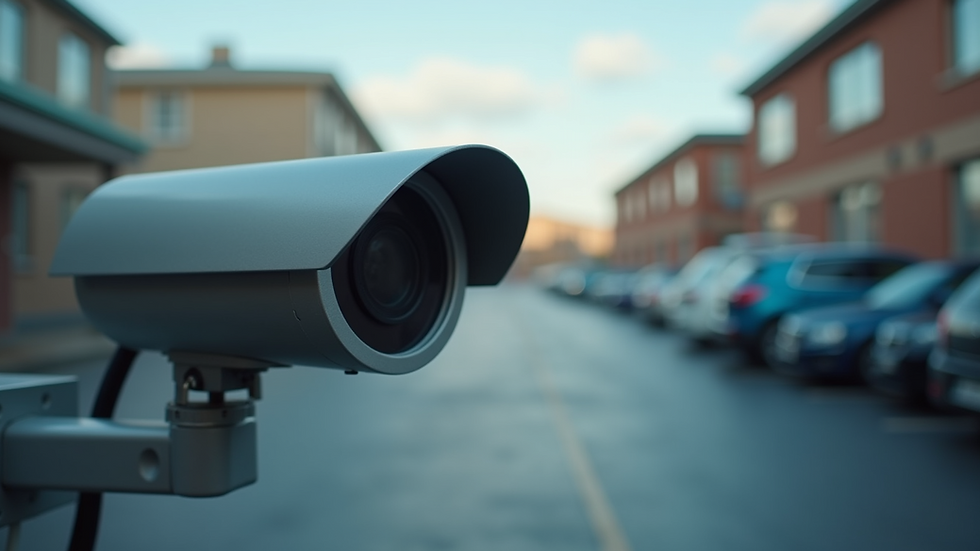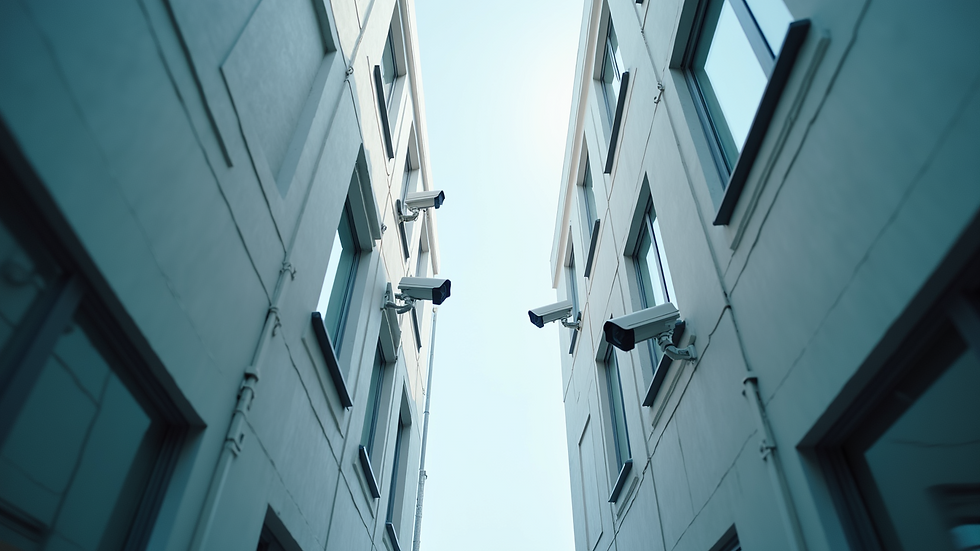Enhance Your Business Security with Modern Surveillance Systems
- lanewhittaker
- Jul 25
- 4 min read
In today's fast-paced business environment, ensuring the security of your premises is more critical than ever. With the rise in property crime and the increasing sophistication of security threats, investing in modern surveillance systems has become a necessity for many organizations. These advanced systems help protect your assets, enhance safety, and provide peace of mind to owners and employees alike.
Advanced Surveillance Systems
Modern surveillance systems have evolved significantly from traditional camera setups. They now incorporate features such as high-definition video recording, remote access, and advanced analytics. These innovations allow businesses to monitor their premises in real-time and respond quickly to any incidents.
The latest security cameras, for example, offer features like night vision, motion detection, and facial recognition. These enhancements expand the capabilities of surveillance systems, allowing for more comprehensive coverage and detailed monitoring. Companies can now review footage remotely from their smartphones or computers, making it easier to keep an eye on all areas of their business.

Benefits of Implementing Advanced Surveillance Systems
Investing in advanced surveillance systems yields multiple benefits for businesses. Here are a few key advantages that make these systems indispensable:
1. Crime Deterrence
One of the most apparent benefits of having surveillance cameras is their ability to deter crime. Studies consistently show that the presence of visible cameras discourages potential thieves and vandals from targeting a business. Knowing they're being watched encourages individuals to think twice before engaging in unlawful activities.
2. Improved Safety
Surveillance systems also enhance the safety of employees and customers. High-quality footage can help identify safety hazards, monitor employee behavior, and ensure compliance with safety protocols. By keeping an eye on operational processes, businesses can create a safer working environment for everyone.
3. Evidence Collection
In the unfortunate event of a crime, having a surveillance system provides crucial evidence that can be used in investigations. Recorded footage offers concrete proof that can assist law enforcement in identifying and prosecuting offenders. Additionally, businesses may use video evidence to resolve disputes or customer complaints effectively.
4. Insurance Benefits
Implementing a surveillance system may also lead to lower insurance premiums. Many insurance providers consider businesses with robust security measures as lower risks. An effective security system can result in reduced insurance costs, providing further financial incentives to invest.

How Much Does a Business Security System Cost Per Month?
The cost of a business security system can vary significantly depending on several factors, including the size of your premises, the type of equipment you choose, and any additional monitoring services. On average, businesses may spend anywhere from $200 to $1500 a month for basic security services.
For a more comprehensive plan that includes high-definition video surveillance, smart integration, and remote access, costs could be higher, ranging from $200 to $500 per month. Some service providers also offer customized plans, which can include integration with other business security systems, such as alarms and access control.
When considering the cost, it's essential to weigh the potential savings from preventing theft, reducing insurance premiums, and improving overall safety against the expense. A well-implemented surveillance system can lead to substantial financial benefits.
Choosing the Right Surveillance System
Selecting the right surveillance system requires careful consideration of your business’s unique needs. Here are some actionable recommendations to help you make an informed choice:
Assess Your Security Needs
Evaluate the vulnerabilities of your business. Identify high-risk areas and assess where security breaches could potentially occur. Consider whether outdoor coverage is necessary and how many cameras will offer the best coverage for your facility.
Consider the Technology
Modern surveillance systems can utilize various technologies offering different capabilities. High-definition (HD) cameras provide clear images, while infrared cameras can capture footage in low light. Make sure to choose a system that aligns with your specific requirements regarding image quality and environment.
Explore Integration Options
Look for systems that can integrate with other security measures, such as alarms and access control systems. This integration ensures a holistic approach to security and can streamline your monitoring efforts.
Evaluate Cost vs. Value
While it may be tempting to go for the most budget-friendly option, consider the long-term value of each system. Cheaper systems may lack crucial features that could impinge on their effectiveness over time. Instead of focusing solely on upfront costs, evaluate the potential return on investment through improved security.

Best Practices for Operating Your Surveillance System
Once you’ve invested in advanced surveillance systems, following best practices ensures their effectiveness. Consider these guidelines:
1. Proper Placement of Cameras
Ensure that cameras are positioned to maximize visibility. Cover all high-risk areas, including entry and exit points, parking lots, and blind spots within your business premises. Adjust their angles to reduce obstructions and enhance monitoring capability.
2. Regular Maintenance
Schedule routine inspections and maintenance to ensure that all components remain operational. Dust, dirt, or malfunctions can diminish the effectiveness of your surveillance system. Regular checks are essential to confirm that cameras are functioning correctly and providing clear images.
3. Update Software and Firmware
Keep your surveillance system updated with the latest software and firmware releases. Manufacturers often provide updates to enhance security, improve performance, and add new capabilities. By maintaining updated systems, you can mitigate potential vulnerabilities.
4. Train Your Employees
Familiarize your staff with how to use the surveillance systems effectively. Ensure they know how to access footage and understand protocols for reporting incidents. Comprehensive training establishes a culture of responsibility and vigilance among employees.
5. Monitor and Review Footage Regularly
Set aside time to monitor recorded footage. Regular reviews can help identify patterns, potential risks, and any areas needing attention. They also enhance overall awareness and enable your team to respond more proactively to incidents.
Final Thoughts
In a world where security threats are ever-evolving, investing in advanced surveillance systems equips businesses with the tools necessary to protect their assets, employees, and customers. From deterring crime to improving safety and offering peace of mind, the benefits are undeniable. By understanding the importance of these systems, assessing your needs, and following best practices, your business can establish a solid security foundation.
Overall, choosing the right surveillance solution is a strategic decision that pays dividends in the long run. For more information on how to set up your business security systems, consider seeking professional guidance to help you create a secure environment.




Comments